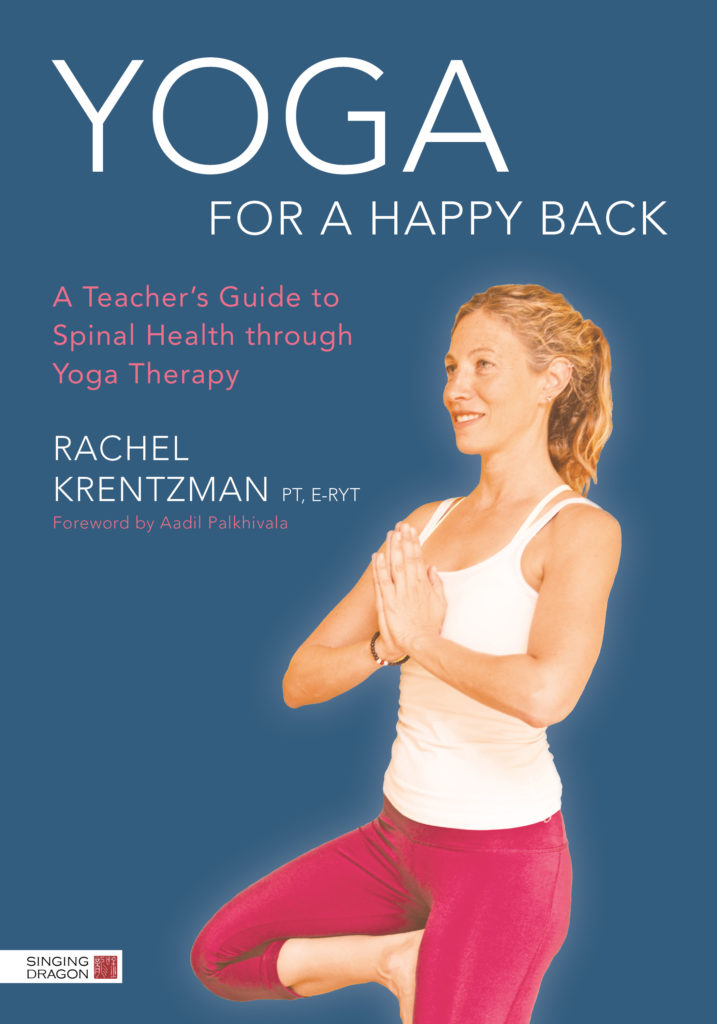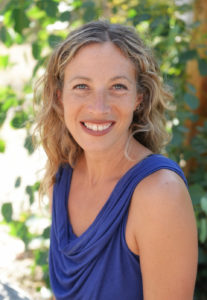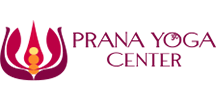Rachel Krentzman publishes her first book!

YOGA FOR A HAPPY BACK: A Teacher’s Guide to Spinal Health through Yoga Therapy
We are excited and thrilled to congratulate our senior teacher Rachel Krentzman, E-RYT, PT on the publication on her first book: Yoga for a Happy Back: A Teacher’s Guide to Spinal Health Through Yoga Therapy, which is now available on amazon.
Utilizing her vast experience as a physical therapist and yoga therapist, and the latest advances in the field, Rachel advises on how to design therapeutic yoga classes for individuals with back pain. Included is information on creating class themes, and never before published sequences from the Purna Yoga tradition for alignment based treatment of specific spinal conditions, along with over 300 photos and illustrations.
Rachel was instrumental in starting Prana’s Yoga Therapy Program, which includes weekly classes, specialty workshops and her Yoga for a Happy Back certification program, offered again this July.
Here’s is an excerpt of the book’s Introduction:
Every Wednesday I swim in the ocean. I created this ritual more than four years ago. After dropping my son off at school, I head straight to La Jolla Cove and brave the always-chilly entrance to the mile long swim to the buoys. And every year on my birthday, I swim the two-mile cove route to La Jolla Shores and enjoy a birthday brunch with an ocean view. I rarely miss a week unless it has been raining or the swell is too big. I am there, in fog or sunshine, wending my way through the kelp and the unknown.
This cove is a sacred place for me. I left my wedding band near the quarter mile buoy knowing the ocean would receive it and hold it for me. I visit it every now and then and use the time out there to pay homage to the dreams I had and the love I was searching for. Sometimes I cry, sometimes I pray and other times I just swim by and glance back. When I emerge from the ocean, refreshed and humbled, I shower off and go teach my 10 a.m. Yoga class. My students are accustomed to me running in with sandy feet and an occasional strand of seaweed in my salty hair. They know it will be a good class if I swam. Swimming in the cove gives me the clarity and focus that I have only otherwise found with a regular Yoga practice. It helps me to be fully present and aware and feeds my soul.
Being out in the ocean is a stark reminder of how vulnerable we truly are. I usually swim with a partner for safety and to ease some of the fears of the unknown world below. If my friends cannot make it, I go anyway, but find my mind an interesting beast to tame. I work on constantly redirecting my thoughts away from images from the “Jaws” novel I snuck from my parents’ bookshelf and read when I was a child. I just keep my eye on the quarter-mile buoy and swim towards it with certainty that once I reach it, I am safe and protected.
As I swam out towards my buoy on one particular Wednesday, an uneasy feeling came over me. I suddenly and unexpectedly became aware of the illusion my mind had created. I had always seen the buoy as a destination, an island that would save me from anything out there if I could just touch it. The knowledge that it was there gave me direction and a sense of peace. However, when I reached the buoy that day, it hit me that the safety I felt was false. I had created it to feel some sense of control over my environment, but the truth was I was still out at sea and at the mercy of its depths.
We all have our buoys, our illusions that we cling to for safety and security. We learn this at a young age as we are wired for survival. For some, that buoy is money and a nice home; for others it is family or a significant other, a career or expertise in a field. We cling to ideas of who we are or who we need to be to feel all right in this world, for this world is like the ocean, vast, expansive and unpredictable. It can be beautiful and peaceful and in an instant become turbulent and hostile.
This ‘clinging’ often manifests as physical tension in the muscles, tissues and joints. When we are gripping in our minds, we will translate that sense of ‘holding on for dear life’ to our bodies as well. The more we try to control life, the more we tense up. The more we can let go and trust, the more we unwind. (…)
And that is why I have written this book—so that other Yoga teachers, physical therapists, medical and health professionals can better help their students and clients to heal themselves.
The lower back and sacrum make up the foundation of our spine. Our sense of survival is lodged there, and our root chakra, the energy center symbolizing our relationships, home, safety, money and family. When we feel out of control in our lives, our spinal muscles contract to hold us together. In an attempt to survive, the sympathetic ‘fight or flight’ nervous system fires continually, creating and maintaining tension throughout the body. In order to heal, it is important to allow ourselves to move from an anxious and high-tension mindset to a more expansive and trusting one.
What I have learned—after building up a lifetime of coping mechanisms to control my unstable surroundings—is that this type of living, of striving and gripping, holding on tight, only creates more tension. Letting go and trusting is the hardest thing I have ever had to practice.
Yoga is a brilliant and beautiful science designed to create a strong, healthy spine. But the intention of the practice is to allow us the freedom to sit, be still and get to know our real problem, the mind. Pain is an opportunity to stop, listen and do something different. Pain is how our bodies scream out for us to pay attention, to stop forcing and to start feeling. So, while stretching our bodies in Yoga, we are given the opportunity to discover our true selves, to take each breath as it comes and be present in every moment.
Yoga has not only healed my back, it has healed my life. It has not only given me tools I can use to relieve pain and discomfort, but it has given me tools to deal with the challenges of being human in an ever changing world. Yoga builds inside of us a way to trust in the unfolding of life as it is and to see the beauty in each moment, even in our struggles and pain.
Most people tend to go to health professionals expecting them to provide the right “fix.” What I have seen, as a physical therapist for the last twenty years, is that true healing is a partnership and a process. It requires commitment, practice, patience and acceptance.
Yoga offers much more than a set of postures or therapeutic exercises; it can show your students and clients a new way to live in the body. Instead of trying to mask pain or fight it, we learn to sit with it and let it unwind from the inside out. To do so takes both persistence and kindness. And a great deal of courage.
This book is an instructional manual to help you help your students and clients work through their injuries and heal their back pain, but it is also a memoir of healing. It is the story of the mind-body connection and how paying attention to your big toe mound can, in fact, change your life.
Rachel second book ‘Yoga for Scoliosis” will be published in 2017. Learn more about Rachel and Happy Back Yoga.
Join Rachel for two specialty workshops on Reversing the Aging of the Spine and Yoga for Scoliosis at Prana in June/July.
Happy Back Yoga Teacher Training, July 7-16, 2016: Free demo class & Q/A will be held on June 5th at 3pm. Please rsvp to alex@prana-yoga.com



